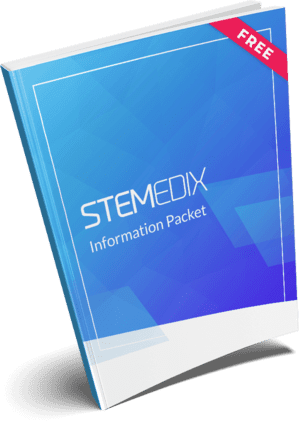Osteonecrosis of the femoral head (ONFH) is a serious condition that affects the hip joint, leading to bone damage and joint problems. The disease occurs when the blood supply to the femoral head (the top part of the thigh bone) is disrupted, leading to small fractures and a failure of the bone to repair itself.
ONFH is a significant health issue worldwide. In the United States, approximately 20,000 to 30,000 people are diagnosed with ONFH each year. In China, more than 8 million individuals over the age of 15 suffer from nontraumatic ONFH annually. This condition mainly affects younger and middle-aged adults, making long-term treatment outcomes particularly challenging.
One of the most common treatment options for severe ONFH is total hip arthroplasty (THA), also known as hip replacement. However, THA has limitations, including a high revision rate and a limited lifespan for the artificial joint.
To preserve the natural joint and delay or avoid surgery, early intervention is essential. Several treatments are currently available, including medication, physical therapy, and surgical procedures like core decompression and bone grafting. However, these methods produce inconsistent results, meaning that better treatment options are still needed.
One promising approach involves mesenchymal stem cell (MSC) therapy. MSCs play an important role in bone healing, and their use in treating ONFH has been studied extensively.
In this study, Zhao et al. explore the available evidence for the therapeutic effect of human umbilical cord mesenchymal stem cells (HUCMSCs) on early-stage traumatic ONFH.
Potential of Stem Cell Therapy in ONFH Treatment
ONFH leads to bone cell death due to lack of blood supply. In patients with ONFH caused by excessive alcohol consumption or steroid use, the ability of MSCs to form new bone is significantly reduced. This results in an imbalance between bone formation and bone loss, leading to the weakening and collapse of the femoral head.
The authors report that adding new MSCs from an external source, such as HUCMSCs, may help by replenishing lost cells and stimulating bone regeneration. Studies have shown that MSCs from healthy individuals can be transplanted into patients without causing immune rejection. MSCs have already been used successfully in regenerating various types of tissues, and they can be obtained from several sources, including bone marrow, fat tissue, and umbilical cords.
BMMSCs are the most commonly studied type of MSCs, but their use is limited because they become less effective with age and disease. Research comparing the effectiveness of different stem cell sources has found that HUCMSCs may be a better alternative. These cells are easily obtained from umbilical cords, involve no ethical concerns, and have strong growth potential. Because of these advantages, HUCMSCs have been proposed as a promising treatment for ONFH.
Safety of Stem Cell Therapy
The authors cite several studies that have analyzed the safety of transplanting both BMMSCs and HUCMSCs. For example, one study following patients for 12 months after receiving MSC therapy found no serious adverse effects. Another study tracked patients for three years and reported no significant side effects.
HUCMSCs, in particular, have been found to improve the local healing environment by secreting factors that reduce inflammation and promote tissue repair. Experimental studies in animals also confirm the safety of HUCMSCs, showing no immune rejection or tumor formation after transplantation.
Effectiveness of HUCMSCs in Treating ONFH
To maximize the effectiveness of HUCMSC therapy, the authors focused on optimizing how the cells are delivered to the femoral head. Intravenous (IV) injection of MSCs demonstrated some benefits, but the number of stem cells that actually reach the affected area was limited. To improve results, researchers also tested direct injection of HUCMSCs into the femoral head, ensuring a higher concentration of cells in the damaged area.
Studies have shown that injected HUCMSCs can survive and function in the low-oxygen and damaged environment of the femoral head. At four weeks after transplantation, a significant number of HUCMSCs were detected in the bone, but by eight weeks, their numbers had decreased. According to the authors, this suggests that the transplanted cells either died or migrated to other areas over time. Despite this, the therapeutic effects at four weeks were better compared to untreated ONFH cases. Imaging studies and tissue analysis confirmed that bones treated with HUCMSCs had improved structure and reduced damage compared to those that did not receive treatment.
Clinical Implications and Future Research
According to Zhao et al., current guidelines suggest that for patients with early-stage ONFH, a combination of core decompression and MSC therapy may be beneficial. Research has shown that MSCs work best when provided in a low-oxygen environment, which enhances their ability to regenerate bone. Further studies are needed to refine MSC treatment strategies, determine the best dosage, and evaluate long-term outcomes.
Future research should also explore ways to prolong the survival of transplanted MSCs in the femoral head. One potential approach is preconditioning MSCs with low oxygen before transplantation to enhance their ability to function in damaged tissue. Other studies suggest that combining MSC therapy with additional bone-supporting treatments, such as growth factors or specialized scaffolds, may improve outcomes.
Stem Cell Therapy for ONFH: A Promising Approach
The authors conclude that HUCMSC therapy offers a promising new approach to treating ONFH by replenishing damaged bone cells, improving blood supply, and reducing inflammation. Compared to other types of stem cells, HUCMSCs have advantages such as easy availability, strong regenerative potential, and low risk of immune rejection. While safety concerns remain, current studies indicate that HUCMSCs are well tolerated and do not cause severe side effects.
Despite this promising approach, ongoing research will help refine the use of HUCMSCs for ONFH treatment and determine the most effective ways to enhance their therapeutic potential. With further development, HUCMSC therapy may become a standard option for preserving hip joint function and delaying or preventing the need for hip replacement surgery.
Source: Zhao J, Meng H, Liao S, Su Y, Guo L, Wang A, Xu W, Zhou H, Peng J. Therapeutic effect of human umbilical cord mesenchymal stem cells in early traumatic osteonecrosis of the femoral head. J Orthop Translat. 2022 Oct 14;37:126-142. doi: 10.1016/j.jot.2022.09.008. PMID: 36313533; PMCID: PMC9582590.


 St. Petersburg, Florida
St. Petersburg, Florida
